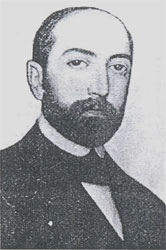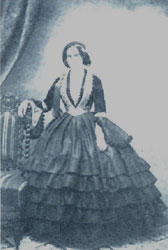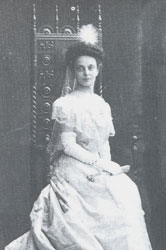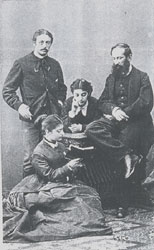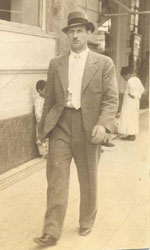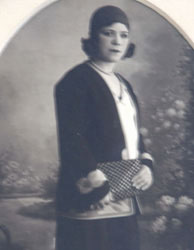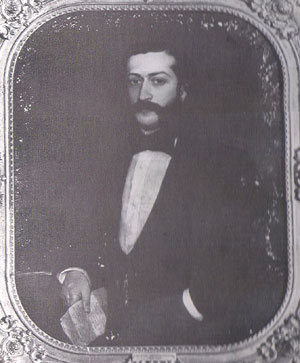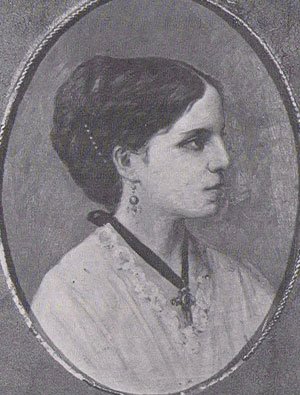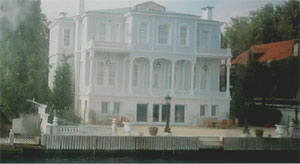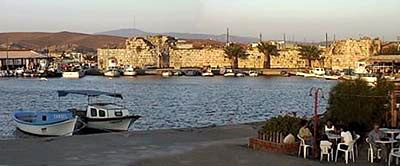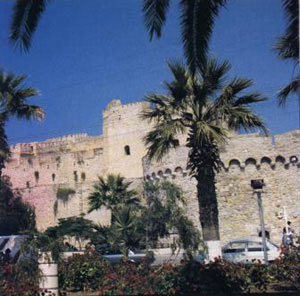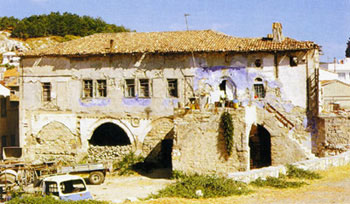Rose Marie Caporal | Alessandro Pannuti | Ft Joe Buttigieg | Mary Lemma | Antoine ‘Toto’ Karakulak | Willie Buttigieg | Erika Lochner Hess | Maria Innes Filipuci | Catherine Filipuci | Harry Charnaud | Alfred A. Simes | Padre Stefano Negro | Giuseppe Herve Arcas | Filipu Faruggia | Mete Göktuğ | Graham Lee | Valerie Neild | Yolande Whittall | Robert Wilson | Osman Streater | Edward de Jongh | Daphne Manussis | Cynthia Hill | Chris Seaton | Andrew Mango | Robert C. Baker | Duncan Wallace QC | Dr Redvers ‘Red’ Cecil Warren | Nikolaos Karavias | Marianne Barker | Ümit Eser | Helen Lawrence | Alison Tubini Miner | Katherine Creon | Giovanni Scognamillo | Hakkı Sabancalı | Joyce Cully | Jeffrey Tucker | Yusuf Osman | Willem Daniels | Wendy Hilda James | Charles Blyth Holton | Andrew Malleson | Alex Baltazzi | Lorin Washburn | Tom Rees | Charlie Sarell | Müsemma Sabancıoğlu | Marie Anne Marandet | Hümeyra Birol Akkurt | Alain Giraud | Rev. Francis ‘Patrick’ Ashe | Fabio Tito | Pelin Böke | Antonio Cambi | Enrico Giustiniani | Chas Hill | Arthur ‘Mike’ Waring Roberts III | Angela Fry | Nadia Giraud | Roland Richichi | Joseph Murat | George Poulimenos | Bayne MacDougall | Mercia Mason-Fudim née Arcas | Eda Kaçar Özmutaf | Quentin Compton-Bishop | Elizabeth Knight | Charles F. Wilkinson | Antony Wynn | Anna Laysa Di Lernia | Pierino & Iolanda Braggiotti | Philip Mansel | Bernard d’Andria | Achilleas Chatziconstantinou | Enrichetta Micaleff | Enrico Aliotti Snr. | Patrick Grigsby | Anna Maria and Rinaldo Russo | Mehmet Yüce | Wallis Kidd | Jean-Pierre Giraud | Osman Öndeş | Jean François d’Andria | Betty McKernan | Frederick de Cramer | Emilio Levante | Jeanne Glennon LeComte | Jane Spooner | Richard Seivers | Frances Clegg
 |
Aristide Baltazzi Bey |
Wilhelmine Baltazzi, born von Reineck,
(1831-1904) wife of Aristide Baltazzi Bey |
I feel your types
of investigations are very useful as there is sparse little information
concerning the Levantines. I don’t know the reason why the Baltazzis came from Venice initially, but we see them in both Chios and Smyrna from 1746. Evangelino Baltazzi marries with Vgerou Mavrocordato, and as children they have George, Emanuele, Theodore, Demetrio, Giovanni and Christina. Emanuele is my great-great grandfather, Demostene great grandfather, Alessandro grandfather, Constantino my father and Aristide is Emanuele’s son, thus my great uncle. Aristide Baltazzi Bey (1830-1887) was an active man of many facets. He was at times the municipal head of Büyükdere neighbourhood on the Bosphorus, the general head of the forestry commission, vice-minister of finance and the president of the Societe General Company. He was honoured by the title of ‘Bey’ and the order of Mecidiye. He married Baroness W. von Reineck and lived in Tarabya, and owned a large farm in the Aliağa region north of Izmir. Within this large estate, my great-grandfather Demostene (1836-1896) conducted his first exactions (Kyme, Myrina) that were the start of a career and a major contribution in archaeology and the first Turkish museums. Demostene Baltazzi was married to Maria Sevastopoulo, a member of one of the major Byzantine origin Chios families, the Sevastos. He lived in the house in Buca in which he welcomed the Sultan Abdülaziz in 1863. Due to his work at the Istanbul Archaeology museum [archive postcard view] he spent the latter years of his life in that city. |
||
Princess Julie Caradja, (1865-1945) daughter of Aristide Baltazzi Bey and wife of the Ambassador George Caradja |
The family also
moved later to Istanbul, and Theodore (photos of his tomb) together with Emanuele’s brother
established the first ‘Dersaadet’ [Banque de Constantinople] bank
there. Aristide was responsible for organising the first ‘Ottoman’
exhibition in Istanbul in 1863. His brother Demostene was an eminent
archaeologist whose summer house in Buca still stands. Due to the financial crisis of a declining empire the loans to the bank were not paid, and the bank had to be wound up. Mr Alex Baltazzi takes a keen interest in his family heritage, has written about the archaeologist Demostene Baltazzi, published in the Izmir council publication. He was interviewed in 1993 by a reporter (Şefik Ertürk) from the English language Turkish daily ‘Turkish daily news’ and the extract follows. |
|||
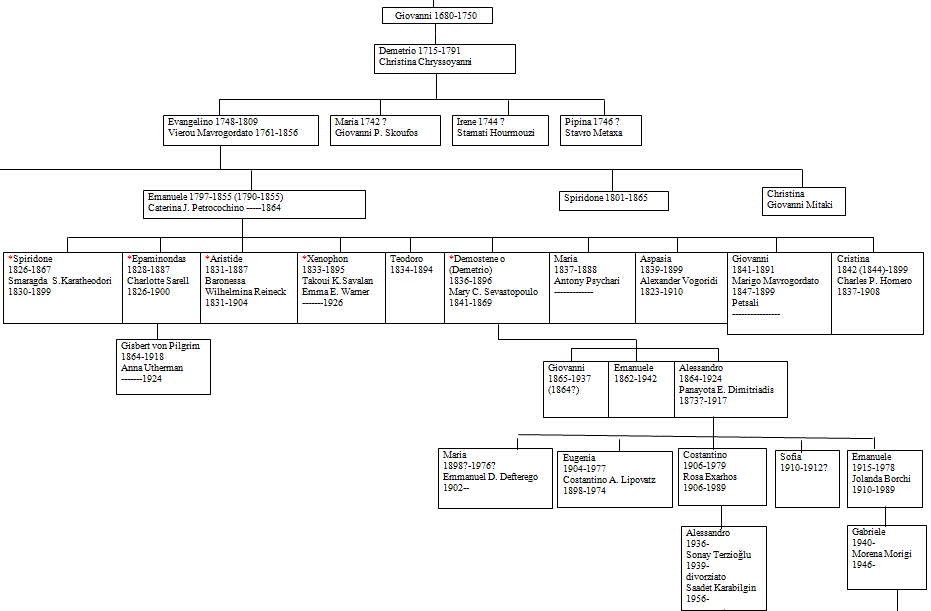
Simplified ancestral tree of Alex Baltazzi, work courtesy of his cousin Gabriele Baltazzi
Being a Levantine
TDN: It is said you belong to the oldest aristocratic Levantine family of Turkey…
Baltazzi: I do not know if we are the oldest. Some writers point out that they found some traces of Baltazzis in the Fener area of Istanbul dating from 1204 during the Crusades period. However the oldest Venetian passport copy that I have got is dated Dec 9, 1746. This passport is for Marino Baltazzi, who went from Venice to Izmir forever – the pioneer of the Baltazzis in Turkey.
TDN: What is the picture in the frame hanging on your office wall? Is it your coat of arms? Can you tell us a little about nobility?
Baltazzi: Yes, it is our family’s Venetian coat of arms, and it is mentioned in the ‘Collezione Rare di Stemmi Gentilizi Italiani’ of Count F. Mattei as this: ‘The Baltazzi of Venetian origin and established in Venice since an ‘epoca remota’ has the honour to have as members churchmen, ducal chancellors, courageous warriors and talented artists…’.
About nobility, I really am not so interested and have not studied this subject deeply. As you see on the coat of arms, there is the helmet and the cross of the knights of St. John (Malta). Furthermore, ancient Rome, Venice and to a certain extent Byzantium did not have the same nobility system as found later in England, France, Austria, Spain etc. You were patrician and only they could become a doge – contrary to the other countries mentioned where you had the whole scale of knights, barons, counts, marquis, dukes etc.
French kings were making their mistresses noble in one night; Miss Poisson became Mme. Pompadour. It is the same case with the Vatican and Napoleon period (Napoleon already is considered by the purists as an usurper of nobility).
In the copies of ‘tapus’ (title of property) which I have seen when mention is made of many of my ancestors the word ‘Bey’ (gentleman) follows the surname; for example ‘Baltaci Bey’ also ‘Baltacızade’.
I think it is more interesting to study how far back you can go with our family tree, with the Baltazzi family. I succeeded in going as far as Bernardo Baltazzi (1480). He was the governor of Venetian galleys (warships). A connection has been found going back to ancient Rome with my great great grandmother’s family (on my father’s side) Vgerou Mavrocordato, of the famous Chiote Byzantine Greek family, the Phanar princes and the Hospadars of Walachia (today’s Romania) and Moldavia. The patrician family Cordato who married into the Chiote family Mavro, took the name Mavrocordato.
Now, with a little imagination and fantasy considering that many old families have been completely extinguished and the turmoil in the Balkans, East Europe, I may vindicate some ‘crown’ for my sons at Moldavia, as they were doing in the Middle Ages. But lets be serious…
A study of heraldry is interesting, and there is a kind of pride if you can prove eight quarters (I can do that for my grandfather Alexander 1866). In Great Britain, the late Alfred Joseph Baron Mowbrey, Seagrave and Stourton had an emblazonment of 12 quarters, but that is a unique case.
TDN: What is it exactly to be a Levantine?
Baltazzi: First of all, let me consider if I accept being called Levantine, as some prejudice has been created around this term. The term ‘Levantine’ designates people of European descent living in the Middle East/Orient. Some Europeans and a few Turkish and Greek writers who imitated them used this term to describe merchants who are not doing business in a very straight way or people of indefinite origins and culture. Regarding origins, that of the Levantines is very clear if someone could make the effort to look into it.
However, there is no record of malpractice in business for any Levantine family in Turkey or in Europe. They were of cosmopolitan origin and culture, which was highly appreciated and necessary to Europe and the civilised world. I think that the Levantines, who were fluent in more than two, three languages, who knew very well the Eastern and Western cultures and mentalities, were creating a complex in a certain way. Some ‘campalinist’ (an Italian word designating a segregationist mind promoting only the interests of small communities and which does not see further than the bell ‘campana’ of its village church) did exist among the Europeans who did not know more than their native dialect. Complexes create fear and prejudices.
TDN: What is your nationality?
Baltazzi: It is very simple. I am of Venetian origin, but with the fall of Venice to Austria, we automatically got Austrian nationality. One Baltazzi represents the Austrian Izmir community by the marriage of Franz Joseph with Sissi. Then, when Italy finally reigned, we regained Italian nationality, and I am still Italian. I also have Turkish nationality.
TDN: Were all your family Italians?
Baltazzi: No, in those days it was natural amongst the European descendants living in the Middle East to marry between themselves. However, nationality had no importance but religion did. This was to a certain extent the ‘nations’ system of the Ottoman Empire, and all religions were supporting it with their segregationist rules.
We, contrary to some communitarian families, have been a little more open, at least with the various Christian churches. We have had various marriages with the powerful Byzantine Greek Ottoman families; for example, the famous Mavrocordatos, as mentioned above. Also with the diplomats and princes of Samos, the Karathedori Pasha family, the Vogoridous and the Naum Pasha families. The Genoese / Chiotes families, Negroponte (still in Izmir), the Petrocochino (there was a street with their name in Izmir). Then, of course, also with the Austrians (Vetseras, von Stockau, Erdoedy, Ugarte, Bavariurus, von Raineck). And with the British Sarell, (one descendant of Sarell was ambassador in Ankara in the ‘70s). Furthermore, Russians, Americans; etc…etc. You had to wait until my marriage (1965) for a Baltazzi to finally marry a Turk.
TDN: We heard that your ancestors were very close to the sultans and involved in the finances of the Ottoman empire.
Baltazzi: Yes, indeed. It is known that Emanuelle Baltazzi (my great-great grandfather) although a foreigner, was heartily faithful to the ‘Devleti Aliye’ (the State). There was a magnificent ‘ferman’ (imperial edict) granted by Sultan Mahmud II to him. He was given permission to build a house in Beyoglu in the vicinity of the French Church. This was the first permission ever granted to a foreigner to own property in Turkey.
TDN: What were your family’s activities?
Baltazzi: Mainly banking and exchange. We established, in association with a French nobleman (d’Alleon), the first Turkish bank in 1845 – Istanbul Bank. We were also the principal founders of consecutive banks such as Societe Generale de l’Empire Ottoman in 1864, which merged with the Ottoman Bank. We brought the first ferries to the Bosphorus from England without accepting any profit, and the sultan granted us 10 percent of the shares (another magnificent ‘ferman’) in the Şirketi Hayriye (1852) - postcard images-. The Şirketi Hayriye was the first Turkish company made for the exploitation of these ferries. We were involved privately, as well as with our bank which also had European branches, in the main activities of the empire – railways, tramways, the Galata Bridge, various monopolies of salt, windmills, harbours etc. Finally, we created the first Turkish tobacco company, ‘the Rejii’.
Note: For more information on banking history, refer to the museum of the Ottoman bank and its research centre.
TDN: Professor Haydar Kazgan wrote very lengthily about the Baltazzis in his book ‘The Galata Bankers’ and in the Ekonomi Ansiklopedisi’.
Baltazzi: Yes, and I am grateful to him in the way that he mentions that Baltazzi was always making an effort to help the empire. He is emphasizing that we were for at least half a century a prominent economic power. He is also speaking about our properties in Aliağa (where we collaborate in the excavations of Myrina terracotas) and the Tire, which we let to Lamartine for his unsuccessful agricultural project.
TDN: You were the owner of a lot of land in Turkey…
Baltazzi: Yes many ‘çiftlik’ (farm) as they say in Turkish. I do not know exactly how many. I will not be influenced by the past and do work hard to build a future. However, I know about Aliağa (the whole refinery area plus the former schools, islands, etc.). Menemen, Foça, Turgutlu (there was a big street called Baltacilar there), Kemalpaşa, Tire, Edremit, Yalova, in Egypt; etc…etc. It should without exaggeration make millions of square meters.
TDN: In some of your articles you mention Aristide Baltazzi Bey and Demostene Baltazzi Bey. Can you tell us something about them?
Baltazzi: Yes, together with Emmanuele they are my favourites. Aristide (1831-1887) was my great-great granduncle. He was a very active person, not only in banking, but also in social life. He was the mayor of Büyükdere (1872). In those times mayors had more power than they have now and they were only 14 municipalities in Istanbul. He took an active part in the organisation of the Istanbul International Exhibition of 1863 (Serg-i-umumi-i Osmani). This was a big event, which created the first tourist group movements in Turkey. He was awarded the ‘mecidiye’ (a silver coin issued in the time of Sultan Abdulmecit) for his contributions.
Demostene (1836-1890) was my great grandfather. He was an intellectual and an aesthete. In fact, he was a splendid figure, and I feel myself very close to him. His wife Maria from the noble and ancient Byzantine family Sevastos died at the age of 28. After her death he consecrated his life and fortune to archaeology and the arts. He was a close friend and collaborator of Hamdi Bey (who mentions him various times in his writing). He first excavated Kyme, then he went together with Hamdi Bey to Sydon for the sarcophagus excavation (Alexander’s sarcophagus, etc.). He had a famous Byzantine coin collection. All has been donated to the Istanbul Archaeological Museum. This includes many articles on archaeology and decorations.
TDN:
How are you connected to the drama of Mayerling and to Archduke
Rudolf and Mary Vetsera, who committed suicide in 1889? Baltazzi: Very simply, Mary Vetsera’s mother Helene was a Baltazzi, the daughter of Theodore (1758-1860) – my great-great granduncle, who was a banker and economic advisor of the sultan. In Istanbul, Helena met Baron Vetsera, who was an Austrian diplomat at the Austrian Embassy in Istanbul. Embassy gossips were saying that it was due to the economic power of the Baltazzis that Baron Vetsera became ambassador in St. Petersburg. After the marriage of Helena (her father died long before and her mother remarried with the British ambassador in Turkey Allison), she and her three young sisters and four brothers all went to live in Austria. Her sisters married Austrian nobles. Helena’s brothers Aristide, Alexander, Hector and Hanry were tremendous bon vivants and sportsmen. Their horse ‘Kisber’ won the English Derby in 1876 and the Prix de Paris in 1877. Hector was the best riding gentleman in Austria and Hungary - photo of his former residence. According to some sources (it was also in the last movie of ‘Mayerling’ with Sherif and Deneuve), they were very close to Edward the Prince of Wales, Victoria’s son. He was also a famous sportsman and bon vivant. |
||
TDN: What is the exact truth of the drama of Mayerling?
Baltazzi: Nobody is a hundred percent sure, but most probably it was suicide as shown in the last movie. The Hapsburgs were a little ill minded, and Maria (17 years old) was so unloved by Rudolf, although Rudolf in all cases was progressive and Mary was a beautiful, brilliant, educated young girl.
Maria was the opposite of the conformist Stephanie, wife of Rudolf. They could have made a successful marriage, and Maria could have cured Rudolf of all his Hasburgian phantasms. But Franz Joseph and the pope were backward minded and the divorce was not granted. What is sad is that after the tragedy the conservative court tried to hide the truth, to falsify everything and adopt an inhuman attitude towards love and death. Sissi made an exception, embracing Helena and saying ‘we lost our children but that is all’. In spite of their wish to be buried together, they were not, and Mayerling and Maria’s tomb is a pilgrimage for all lovers even in our days.
TDN: I heard that when the sultans visited Izmir they stayed at your houses, or shall I say mansions or villas? I apologise if I use the wrong term.
Baltazzi: No, please do not apologize. I prefer the moderate terms. Yes, they stayed in our houses, but not only in ours, as far as I know. The Whittalls (an English family connected through marriage with the Giraud family, whose daughter married Mustafa Koç) have also had this honour. Speaking about us, it is true that Sultan Abdulmecit stayed in our Bornova house in 1850 and Sultan Abdul Aziz at our Boudjah house in 1863.
|
TDN: It is said that you had magnificent properties. Baltazzi: Yes, they were at least in good taste. Aliağa is mentioned as a castle with its private chapel and cemetery (one building remained until not very long ago and was used as the Aliağa School). Mention is made in the ‘Bosphorus Yallis Literature’ of one in Tarabya (where Helena lived before her marriage). It was close to the Italian Embassy and the Tarabya Hotel (what a mistake that building is), but no longer exists. The one in Yeniköy at the Iskele (still standing) is also mentioned. It is extraordinary to find that in both places, especially in Yeniköy, most of the ‘yalılar’ (waterside houses) were owned by families who were all related to each other such as Baltazzis, Mavrocordato, Sevastopoulo, Karatheodori, etc. But what I am especially proud of is that our first Beyoğlu ‘konak’ (mansion) is mentioned in Seddad Hakkı Eldem’s book ‘Türk Evi’ as a Turkish style, shall I say, an ‘opera d’arte’. The same counts for our Buca house, which is described in Feyyaz Erpi’s book as a building of paladian style providing the aesthetics, rich cultural level and good taste of the owners. However, even if it is in the art book, unfortunately, we did not know how to save this inheritance, and we have to be grateful to gentlemen like Çelik Gülersoy and Touring, who at least could preserve a few and restore them. |
|||
TDN: Your father Constantine left a very impressive memory to all
who knew him. He was a very elegant gentleman and at the same time very
friendly. Baltazzi: Exactly, my super dad was a real gentleman farmer, a great hunter, brave and simple in heart. He never worked and believed every good word. But he also had the luck to have his wife, Rose Exarho, as my mother (also Levantine). She was energetic and had a practical mind. Furthermore, he was a great help to me when I went into the tourism business: he taught me the best of manners. I keep the best of memories from my parents who completely devoted their whole life to me, their only child, and later on to their grandchildren, my sons. TDN: A last question: It appears that you not only still manage your Karavan Tourism Agency, but that you are writing and are active in the tourism associations, etc. Would you speak a little about yourself and your family? Baltazzi: You are tempting me, and this interview will become a memorial. Yes, I was good at St. Joseph (secondary school in Izmir) and later St. Benoit - images - (school in Istanbul giving instruction in French, something that didn’t exist in Izmir at the time) in literature, philosophy and history (arts subjects I was more inclined to - St. Joseph in Istanbul had more reputation on sciences mathematics). But I could not go further on these subjects. |
|
||
Now our sons – Giancardo, 24 [in 1993, now 2006, 37], who has a B.S. in hospitality management from San Diego U.S. International University, and Gianluigi, 20 [back in 1993], who is studying in Spain – are following in my footsteps [now managing the Karavan offices of Istanbul]. I spend some time on writing, including for your excellent TDN, the TÜRSAB (Turkish Travel Agencies Association Review) the Tour News of my friend Nihat Boytüzün.
You must read the Tursab magazine of July. It will probably contain my article on Sayfiye Sultan ‘The Venetian Baffe’. I made a very interesting discovery through her cousin, the erotic poet ‘Giorgio Baffe’. Read it, you will like it.
About my activity in the tourism associations, it is correct that I am on the advisory and regional board of directors of TÜRSAB and I am the vice chairman of ESAD, the Aegean travel agencies association.
By the way, I need your and TDN’s help. We are supporting the Meture International Fair in Izmir. We have prepared an excellent program, many foreign operators will be invited. Regions will have their own pavilions. There will be some special events etc.
Turkey needs an international tourism fair like those in Spain, Italy and elsewhere. It is my baby at this moment, and we are all working hard and aim to reach the success of the Istanbul International Exhibition of 1863, which my Aristide Baltazzi Bey contributed so well to. It is nice to have such in the family.
Below is a translation of Mr. Baltazzi’s article published in the Izmir city culture [İzmir Kent Kültür] magazine, February 2002.
An archaeologist from Smyrna: my great grandfather Demostene Baltazzi
A descendant of a family from Venice who’d lived in Smyrna since 1746, Demostene Baltazzi was born in Izmir in 1836. Together with his three brothers he went to the famous St. Barbe college in Paris. Not choosing banking, the profession of his father, he was responsible for the management of the family farm within the county of Smyrna (then part of Aidin). According to the Melih Gürsoy book ‘Bizim Izmirimiz’ [Our Izmir], D. Baltazzi’s farm holdings were 247.000 acres.
He had an interest in reading, arts and archaeology. I suspect his drive in archaeology was heightened through the sadness of losing his wife Maria in 1869 aged 28. The Istanbul archaeology museum owned a rich library and numismatic collection that he donated.
He spent his summer in his residence in Buca. A portion of the building is still standing and is used as the Buca art lycée. In his book, ‘Buca’da konut mimarisi’ [Domestic architecture in Buca], Feyyaz Erpi states: ‘despite the ruination it has suffered, this building shows even in this state today that it belonged to somebody who appreciated the arts, through the flamboyant architecture and the garden decorated with statues and pools…’ When Sultan Abdülaziz visited Smyrna in 1863, he stayed there. According to legend, the sultan was received through the door facing the Aliotti garden and according to tradition, this door was sealed and never used again. The roads the Sultan passed were carpeted and it is said Demostene spent 4 thousand gold liras for this hospitality.
Demostene Baltazzi started his digs in 1870 on the antique cities of Myrina and Kyme, both within the extensive Baltazzi farm at Aliaga. Objects brought to light were given to the Istanbul archaeology museum and the most famous from Kyme was the marble statue of a woman garbed in classical robes, the feet of a prince, and the busts each of Alexander and Augustus. In addition many terra-cottas were excavated at Dumanlı dağ, Myrina and Çandarlı (Pytane).
Demostene Baltazzi is appointed to represent the Ottoman empire when the famous archaeologist, Salomon Reinach in his French society excavations (1880-83), receives the permit to explore the area between Myrina to Phokaia (Foça). An important collection of Hellenistic terra-cottas would be added to the collections of Istanbul and Louvres museums through these digs. According to the 1874 law, the division of items brought to light in excavations would be divided 1/3 to the excavators, 1/3 to the government and 1/3 to the landowner. Demostene Baltazzi was also successful in his capacity as government commissioner during the digs by the American institute at Assos (1883), overseeing the fair division of the artefacts. However on 21 February 1884 the law concerning digs would be changed and no artefacts could be taken abroad. During this time Demostene Baltazzi would increase the number of digs on behalf of the Ottoman Empire museum. The publication Chroniques D’Orient, directed by Salomon Reinach, would between 1883-1890 continuously praise both the person and the digs of Demostene Baltazzi. Demostene is decorated by the Sultan and is bestowed with the title ‘bey’.
Demostene’s excavations include the Byzantine ruins at Güzel Hisar in the Aliağa region, archaic ceramics at Çandarlı (Pytane) and in April-May 1883 at Dumanlı dağ, valuable terra-cottas from 102 excavated graves together with inscriptions at Kyme and Myrina. Further afield, his activities covered Ödemiş (Hypaepa) (1885), Magnesia on Meander (1887) and at Aidin (Tralies) during 1888-1889, enriching the collections of local museums.
As is known, the star attraction of the Istanbul archaeological museum are the Sidon (Lebanon) pieces. These comprise 20 sarcophagi and includes the Alexander and ‘crying girls’ sarcophagi, treasures excavated in 1887.
Hamdi bey in his book he wrote together with the archaeologist Th. Reinach, ‘Necropole royale de Sidon’, published in French in 1892, states: ‘I left Istanbul on 18th April 1887 and while passing Smyrna, I called on my friend the head of archaeology of the Aidin district, Demostene Baltazzi and requested he accompanied me to Sidon. We reached Sidon on the 30th of the month and began work immediately’. Hamdi bey, in his book, depicts in colourful detail the excitement shared by him and my great grandfather, and when the sarcophagi were excavated, how they embaced with joy.
The writings of Demostene Baltazzi are also important; especially in 1881 his piece ‘Borne des Pergamiens’ (the borders of Pergamonians)…He concludes that Myrina and neighbouring towns were within the control of Pergamon kings, based on the inscriptions and coins he found.
Demostene bey was within the Ottoman exposition committee headed by Hamdi bey, at the world fair in Vienna in 1873. He had a major contribution in the preparation and success of the Ottoman stand. His report on this subject can be found in the book by Mustafa Cezar, ‘Sanata batı’ya açılış ve Osman Hamdi’ [the opening to the West in arts and Osman Hamdi].
The name of Demostene Baltazzi can be seen in the list of staff in 1894 of the ‘Müze-i Hümayun ve Sanayi-Nefise mektebi’ [the school of fine-arts].
My great grandfather died in 1900. He had three sons and two of them died bachelors. The third Alessandro was my grandfather.
Mr Baltazzi has a personal interest in the island of Chios, a stepping stone for many Levantines of the past before settling in Smyrna. Here is my translation of his submission of an article he wrote in Turkish, ahead of the Levantine group trip to the island in October 2004.
THE CHIANS
Even though I am not comfortable with the idea of using religion as a delineation for a study, even one with a historic purpose, it should be our purpose to reflect history from our sources with an unbiased mind. However on the island of Chios, amongst the descendants of the old families, mixture of Byzantine aristocracy, escapees of the Latin (1204) and later Ottoman (1453) conquest of the city and Italian colonisers when the island passed on to Genoese hands, I found a certain collective pride in families scattered around the world, of being Chian (or Chiot), generations with differing nationalities and religious affiliation. This belonging, bridges the Orthodox to Catholic and Protestant, Genoa to Venice, Chios to Izmir, Istanbul, Syra, Piraeus, Marseilles, London, Trieste, Odessa and in fact the 4 continents, a cultural movement I would consider results in the common Levantine heritage.
The Genoese rule in Chios was based on the ‘Mahona’ system where local government and trade was under the hands of big Chios families. This situation continued with the period of Ottoman rule, with Byzantine / Greek and Latin families forming a prosperous oligarchy. Their settlements were concentrated in the Aplotaria and Kampos regions, with the slight later admixture to the Genoese of locals and Ottoman motifs resulted in an eclectic architectural style termed ‘Pyrgos’, typically as large mansions.
A writer who penned many works on the heritage of the island, Philip Argenti’s main work is titled ‘La Noblesse Grecque De Chio - Libro D’oro’ sets out the main families in order of rank of importance through the 5 families (La Pentada), 12 (La Dodekada), and 20 (vingt), includes coat of arms and genealogies, a book viewable at the local Korais library.
The children of these aristocrats were sent abroad for their education, chiefly Italy, strengthening their links with the countries with which they conducted maritime trade. They married amongst themselves (such as the Pentada Mavrogordato, Petrocochino, Argenti, Rodokanaki) and placed brothers and relatives in ports such as Marseilles, London and Trieste, and established commercial and maritime firms. They dominated trade in the Mediterranean and Black sea, and as an example, the ‘Ralli brothers’ firm grew in strength through having brother John in Odessa, Thomas in Istanbul, Augustus in Marseilles, Eustratius Panhas in Liverpool, and others in London and India.
In her book, ‘The Commerce of Smyrna in the Eighteenth Century’, Elena Frangakis Syrett writes [link for an article written by her covering the port’s history in the 19th century] that at the importance of Izmir as a port increased, the Chians became dominant in the commerce of the port - view listing from book. In her book Gelina Harlaftis ‘A history of Greek owned shipping’ talks about the Chiot phase (1830-1860) when by the end of the 18th century 500 Chian firms were active in Izmir. We see that after the 1822 events, these major families leave Chios to be commercially successful in Syros, Odessa and Pireaus, as merchants and as shipowners.
By the mid 19th century as banking and finance developed in Istanbul, we see that along the Baltazzis, these families played a prominent part: Mavrogordato, Ralli, Schillizi, Glavani, Calcoveressi, Corpi, Nomico, Tubini, Rodocanachi, Negroponte, Chrissoveloni, Vlasto, Vouro, Damiano, Psichari and Syngrou. The Chians were also active in other sectors such as mining, construction and architecture. The prominence of the Chians in culture and arts, politics and diplomacy (as detailed in Libro d’Oro) is reflected in their large mansions scattered around the Istanbul quarters of Fener, Pera, Yeniköy, Tarabya, Moda and Büyük ada [Prinkipo]. Wherever they settled, they became the benefactors of their communities (hospitals, schools, churches etc.). I was saddened when I saw that despite having contributed much to the architecture and development of Syros, I found their ‘Monumental’ cemetery on that island to be in a dilapidated condition, and it is depressing that the Chians Orthodox church of Ayos Yanis ton Chion in Galata which I visited a few years ago, is closed even on Sundays.
Note: There is a snap-shot of merchants involved in trade in Istanbul in 1840, derived from the Galata stock exchange listing, showing many of whom were Chians, viewable here.
Of course the Chians who had one of the most prominent position in the island history, the Mavrocordatos (cousins of Mavrogordatos), later became Phanariot Greek noblemen, governors of Valachia and Moldavia, played a prominent role in the Greek inserrection, some rising to the level of prime minister’s office. I have an article writen on the tale of their relationship with the Quadrato family of Bergama.
Most Levantines of Istanbul and Izmir, majority being of Itaian origin, came to these cities via Chios. Amongs the additional mostly Italian family names I have been able to ascentain are Aliotti, Badetti, D’Andria, De Portu, Bragiotti, Colaro, Croce, Corpi, Castelli, Coressi, Della Suda, Dracopoli, Grimaldi, Giustiniani, Chiggini, Filipuzzi, Marcopolis, Manusso, Mainetti, Missir, Negroponte, Russo, Reggio, Sperco, Timoni, Tubini, Vernazza and Vegetti, Pangalo, Velasti, Glavani, Magnifico, Giudici, Pipino, Casanova, Testa, Della Grammatica, D’Isidoro, Draperis, Mamuca delle Torre, Della Rocca, Salvaghi, Salvago, Macripodi, Blanchet, Minetti, Machetti, Damala, Petrovich, Vitali, Serra, Negri, Chiavari, Fornetti, Grilli, Sarde, De Santi, Raffaeli, Guglelmi, Manguri, Datodi, Gallici.
This is the way I found my family’s connection with Chios. Through Alexander Benaki’s ‘Baltazzis’ family book (Athens 1948) and Zolotas Chios history book, we see that Nicolo Baltazzi was in the Aplotaria area of Chios in 1725, and later joined family members who had moved from Venice to Izmir in 1746, and settled later in Istanbul too. Also known, Evangelino Baltazzi (1749 - 1809) married the Chian Vgerou Mavrogordato – Vitella (1761 – 1856) and lived in Bornova – Izmir and their son, my great-great grandfather Emanuele Baltazzi married the Chian Catherine Petrocochino (Katsaros) and their son my great grandfather, the archeologist Demostene Baltazzi married in Izmir the Chian Maria Sevastopoulo (1841 - 1868) of the well-known Chian Byzantine family and great benefactors of Smyrna (Evangelic School, Greek Hospital etc.).
Through Sturdza’s ‘Grandes familles de Grece, D’Albanie et de Constantinople’ there is the following mention about Emanuele’s sons (wrongly indicated as brothers) Spiridon and Epaminondas. I quote:
“Spiridon et Epaminondas Baltazzi apres avoir souscrit a des nombreux emprunts autrichiens et contribué a l’erection de l’ecole autrichienne d'Istanbul furent décorés par l’empereur François Joseph de l’Ordre de la Couronne de Fer IIIe classe (1864) ce qui par voie de consequence entrainait l’annoblissement avec dispense du paiement de la taxe afferente. Le 6.V. 1865 les deux freres recevaient de la chancellerie imperiale le diplome de chevalier avec pour Spyridion un blason différent de celui concede a son frere et le predicat ‘von kale’”.
[“Spiridon and Epaminondas Baltazzi after having subscribed to many Austrian loans, contributed to the erection of the Austrian school of Istanbul and were subsequently decorated by the emperor François Joseph with the Order of the Crown of Iron 3rd class (1864) and by way of consequence this ennoblement allowing for the exemption of the payment of the related taxes. On the 6th of May, 1865, the two brothers received from the imperial chancellery the diploma of knight, which for Spyridion was a blazon different from the one bestowed to his brother and with the title given, ‘von kale’”.]
From family enquiries to the Austrian state archives we see in addition to the above brothers, Theodore (one of Evangelino’s sons) and Leonidas (one of the brothers of Evangelo) also received Austrian decorations.
There were also Baltazzi marriages with Chians on cousin branches; there is branch living in Athens who carries the Baltazzi-Mavrocordato surname, and is the last representative of that line. There were also marriage links with the Ralli, Agelasto and Negroponte families. There is a suggestion that these links go further back, with the Baltazzis being in close connection in maritime trade and banking with Byzantine background Chians to an earlier time. The Venetian roots of my family are tracable to 1480, but a clue to earlier times maybe found from the Prof. İlber Ortay’s ‘Annals from Istanbul’ book, where the information that in the post 1204 Latin occupation of Istanbul there were Baltazzis in the Fener area of Istanbul, deserves further investigation and could reveal the nature of these earlier links.
Sources:
W. Sperco - Les anciennes familles Italiennes de Turquie
G. Zolota - Istoria tis Chios [History of Chios]
M.D. Sturdza - Grandes familles de Grece, D’Albanie et de Constantinople - 1983, reprinted 1999
 |
ANDREA SYNGROU AND THE INVOLVEMENT OF CHIANS IN THE BANKING AND RAILWAY COMPANIES IN ATHENS
Andrea Syngrou (Singros) was born in Istanbul in 1830, but in his words, their roots lie in Chios. Both his father who was a doctor and his mother were born in Chios, she coming from the Nomico family. A. Syngrou was one of the founders of the second bank of Istanbul (1871). By 1872, Syngrou was in competition to found a bank in Athens, his rival being Evangelo Baltazzi (1826-1889) who was married to Zoi, the daughter of Karatheodori Pasha. This rivalry and the story of the establishment of the Pistotiki bank is the subject of a book (Dertilis: To zitima ton trapezon – Banking affair) and they were represented by 3 regional groups, Istanbul, Odessa and Athens.
Of the Istanbul group, those from Chios, Mavrogordatos, Sechiaris, Ralli and Negroponte support the leadership of the Baltazzis. However a branch of Schilizzi, Stefanovitz, Rodonconachi and Vouros give their support to Syngrou. The famous Istanbul banker Zafiri, who is linked to Chios by family marriage, while giving the impression of being in the Baltazzi camp, he too switches loyalty to the Athens and Odessa branch represented by Syngrou. However in many ventures, the partner of Zafiri, the famous Zafiropoulos shows his support to Baltazzi.
As a result the Syngrou group wins influence and the control. E. Baltazzi would remain in the board of directors as a member and partner.
I feel this example and the later evolution of the Greek railway companies operations, is the first signs of the decline of the unity and power of the large Chiotan families. In his memoirs, despite the competition, Syngrou mentions with reverence the Baltazzi family. He tells of how he learned a lot from one of the first bankers, Theodore Baltazzi, and his success in winning of major tenders such as uniforms for the army. He also emphasizes that the generations after the Emanuele – Theodore were not as experienced in banking, making it hard for them to be successful. Also mentioned are the export of Russian horses to the Egyptian palace (1870) by the Evangelo brothers Leonidas and Miltiadis.
Amongst the shareholders to the 1882 Athens railway project and operating companies are the Istanbul banks and Chians, Baltazzi, Galatis, Vouros, Vlasto, Nomico, Negroponte, Stefanovitz, Mavrogordato, Paspati, Rodoconachi, Sevastopoulo and Scaramanga.
Source: Defteri Papayanaki - Oi Elliniki siderodromi (Greek railways) (1882-1910)
Andrea Syngrou, by marrying Ifigenia Mavrocordato, enters the realm of these big families. By bequeathing his considerable fortune to the Greek state, he is considered one of that nation’s greats. One of the principal thoroughfares of Athens, Avenue (Leoforos) Syngrou, carries his name. He died in Athens in 1889.
Notes: 1- There is further information on Evangelino Baltazzi (1826-1889) in a book written by Behzat Üskiden (Pera & Beyoğlu, Bankers of Pera, p. 116) and Prof. Dertilis (to zitima ton trapezon): Around 1860, he followed the family profession of banking, operating from Baltazzi Han (today’s Akbank branch) on 33 Voyvoda Caddesi (Bankers street) - postcard image - However by around 1870 he was based in Athens to assist in the project for the creation of the first private bank in that city. He became a partner in the bank thus created, named Pistotiki Bank. He retained his Italian nationality till he died, and was honoured by the Italian government with the Cavaliere (1868) and Ufficiale (1869) medals. He married from the family of Karatheodori Pacha, a lady by the name of Zoi.
The brothers of Evangelino were also bankers in Istanbul, and Leonidas (1829-1895) was the individual who presented to the Government the project for the tobacco monopoly (Reji) and is considered its founder - Prof. H. Kazgan, ‘Ekonomi Ansiklopedisi, Galata Bankerleri’ [Bankers of Galata, Encyclopaedia of finance].
In addition, Behzat Üskiden’s book on page 142, for the new emerging bankers, mentions: ‘Alexander Baltazzi at 9 Baltazzi Han, Voyvoda Caddesi’.
In addition in March 2013 the researcher Osman Öndeş was able to provide a 1940 map of the Eminönü Tahtakale Quarter (on the opposite shore of Galata) where there is a Baltacı Han (central left area) which still stands today, though for now we have no proof that this name refers to my family, and it is under current investigation - archive invoice from this Han.
Alexander (1863 - 1896) was Aristide Baltazzi Bey’s son and lived in Tarabya - old yalı today -, died a bachelor. As we do not have any real evidence that Evangelino was operating in the Baltazzi Han, it may be safer to say: he was operating in Voyvoda Street where there was also the Baltazzi Han (now Akbank), but for Alexander it is definite that he was operating in the Baltazzi Han as Behzat Üskiden indicates it.
Evangelino Baltazzi |
|
left: Zoi (née Karatheodori) Baltazzi above: The present restored view of the former Baltazzi yalı by the Yeniköy pier, along the European shore of the Bosphorus. Evangelino and his wife should have vacated this property towards 1870 when they moved to Athens. |
2- There is evidence that many of the names mentioned above were also involved in the financing of a later Greek railway project, that of Thessally in 1889, as the listing here shows.
3- A chance discovery in Jan 2009 of an archive postcard of Ayvalık has revealed the activity of another branch of the Baltazzi family in that agriculturally rich region of North Aegean coast. The farm named ‘Macarunia’ was owned by Spiridone (1826-1867), brother of my great grand father Demostene Spiridone, who was married to Smaragda Caratheodory (Karatheodori) and they had a son Emanuele (1850-1906), who married a Psychari, and two sisters Lucie (1849-1894) and Helene (1860-1884). The researcher Nursel Manav1 confirms by the following note extracted from the Ottoman archives: Spiridone Baltazzi had a farm at Ayvalık where he built a pier (official permission granted on 28 March 1865) and made an agreement so that the Russian and the Aziziye Company ships would call at this pier every fifteen days. He then asks the government and is granted the posting of a customs and a security official attached to this pier, and provides them with their lodgings. Thus he creates a working harbour.
On a similar vein from the book by Cevat Yıldırım ‘Güzelhisar Ali Ağa çevresi ile birlikte’ the following information is obtained: In 1899 the pier adjoining the Ali Ağa Baltazzi farm is re-built.
In addition, Spiridone Baltazzi was also the owner of a mansion, a private house yet termed ‘L’Hotel Baltacı’ in Moda, Kadıköy, Istanbul, as detailed and shown in the article ‘Le Pensionnat de Moda’, by Fr. Ange Michel. This building which was designated in the French context of a ‘Hotel’ should be correctly termed as ‘Baltazzi Konak’, is no longer standing.
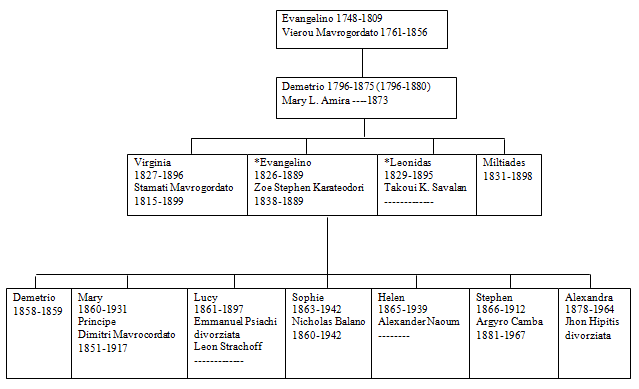
Simplified Demetrio branch of the Baltazzi tree, work courtesy of Gabriele Baltazzi
CHIANS AS SHIPOWNERS
As very well explained by Celina Harlaftis in the aforementioned book "A history of Greek owned shipping", the Greek merchants in the Chiot Network were not large-scale ship-owners, while they owned some vessels, for the most part they chartered the ships that carried their cargos.
1 – CHIANS SHIPOWNERS 1830 – 1860
a) France: Zizinia Bros (9), Dromocaiti (6), Papudoff (3), Petrocochino & Agelasto (2), Ralli, Schilizzi & Argenti (2), Argenti & Co (2), Zariffi (1)
b) England: J. Schilizzi (7), L. Melas (1), P.T. Ralli (1), Spartali (1), Papayanni (4), Xenos (10)
Sources: For the years 1835-50, data are from Sémaphores de Marseilles and for 1860 data are from the list of ship owners, Llyod’s register of shipping, 1860.
2 – CHIAN STEAMSHIP OWNERS 1885
Melas L. (1), Papayani (4) in 1885 (10), Xenos (10), Spartali (1) in 1870 (3), Schilizzi (1), Rodoconachi (4), Scaramanga (1)
3 – 1879 – IONIAN NETWORK – DEAP SEA GOING FLEET ATTACHED TO THE PORT OF SYROS
Negroponte O. (1 steam), Petrocochino (1 ship), Rodocanachi J. (1), Scaramangas S. (1), Sevastopoulo (4)
4 – 1895 PERIOD CHIAN SHIPOWNERS
a) Greece: Sinadinos (1), Zygomalas (1), Negroponte O. 3 river boats Synodinos (1)
b) Romania: Chrissoveloni, 14 river boats (schleps) in the Danube
c) South Russia: Mavrogordatos C. (1), Negroponte D.A. (3)
d) Istanbul and Izmir: D’andria Bros. (2), Michalinos (5)
e) Marseilles: Rodoconachi U.E. (1)
5 – CHIAN OWNERS OF STEAMSHIPS IN 1900
a) Greece: Calvocoressi S. (1), Niotis, Mavrogordato & Mitaraki (1)
b) South Russia: Mavrogordato A.V. (1), Mavrogordato C.C. (3), Negroponte D.A. (6), Negroponte & Societe de Nav. Samienne (1), Scanavi & Sevastopoulo (1), Vagliani & Frangopoulo (2)
c) Istanbul and Izmir: D’andria Bros (1)
d) London: Scaramanga Bros. (3), Sechiari P.A. (2)
Notes:
1- The numbers in parenthesis displays the number of ships.
2- Ms Harlaftis, has shown as Chios origin, Melas L., Papayanni, Spartali, names that my research hadn’t revealed.
3- To see the Chiot shipping network arranged as a table by Mr Baltazzi based on various sources, click here:
4- The Baltazzi family clearly closely cooperated with and was friendly with the Zygolamas family as can be seen by the ornamentation donated to this family by S. Baltazzi for their church in Chios.
BANKING NETWORK OF CHIANS (1830 – 1900)
The success of Chians in trade was also reflected in their prominent position in banking in finance in a wide geography as demonstrated by the examples below.
In the 1845s a Baltazzi in partnership with Psichari had a bank in London, Dimitrio Baltazi in Marseilles, Tubini in London, A. Vlasto was the foreign exchange mogul of Vienna, Scanavi as bankers in Paris and Vienna, Chryssoveloni in Romania, Augustinos Synadinos (married to a Braggiotti from Izmir) with his younger brother Jean’s banking operations in Alexandria and London, the establishment of the National bank of Egypt in 1870 by Salvago, the Chiotan Kokinakisin founding a bank in Odessa, and the aforementioned Chians involvement in banking operations in Istanbul and Athens.
As far as Izmir goes, however much the city was during 18th and 19th centuries a major rival in trade with Istanbul, and often surpassed it particularly in the area of export, nevertheless in terms of banking and finance, Istanbul was always the centre. Izmir was a place where these Istanbul banks had merely branches and regional offices.
The first attempt at a true bank in Izmir was tried out by the Levantines of the city in 1843, but according to the reports of the British consulate in Izmir, Istanbul, particularly the Baltazzi brothers opposed it and no permission was thus granted. The reality is thus; according to recent research by the writer and historian Hüseyin Al (toplumsal tarih July 2000), the Ottoman government to ensure stability in the exchange rates, in 1843 had meetings with Alleon, Baltazzi, Glavani and Ralli, with the result that it made a secret agreement with the French Levantine J. Alleon and Em. Baltazzi for the fixing of the exchange rate for 2 years. Alleon and Baltazzi were successful in maintaining exchange rate stability (£1 = 110 krş) and the agreement was extended. As Hüseyin Al, ‘while the agreement for securing exchange rates with the banks was in effect, the state undertook to prevent the establishment of any new banks organised by foreigners’. With this clause the state would naturally block the establishment of the Smyrna bank.
It must be borne in mind that however much the British and the French in the 19th century were ostensibly trying to protect the Ottoman Empire from Russia, the Empire was nevertheless was within the imperialist economic and trade aims of these powers. Both trade and banking was overwhelmingly in the control of non-Muslims and there was a conflict of interest not with the Ottoman authorities, but between natives (Galata Bankers) and English/French who were coming from abroad. The rivalry between the Galata bankers and the British who wanted to establish a bank in Istanbul is illustrated in a colourful manner in the book ‘Gold for the Sultan – Western Bankers and Ottoman Finance 1856 – 1881’ written by Prof. Christopher Clay, the grandson of Sir William Clay, the director (1856 – 1863) of the Istanbul based Ottoman bank. Both British diplomacy and bankers were not beyond intrigue and unfair accusations against the Constantinople bank and the Galata bankers. In particular Clay points out that Stratford Canning [British ambassador] used derogatory language when referring to Theodore Baltazzi’s morality and mentioning the Banque de Constantinople as ‘discredited’. Yet Between 1843 (date of the secret exchange agreement) to 1852 (termination of bank), the Baltazzis Theodore & Emmanuel and Alleons were able to maintain the exchange rate at £1 = 110 krs.
The reason for the closure of the Banque de Constantinople was due to the non-payment of some of the loans owed to it by the Ottoman state. According to the “Histoire Financiere de la Turquie - A. Du Velay” page 128: ‘Il importait que le Gouvernement acquittat de son cote sa dette vis-avis de la Banque. Or le gene du Tresor en etait arrivée a ce point qu’il fut dans l’impossibilite de rembourser sa dette, et la Banque en fut reduite a des expedients qui compromirent jusqu’a son existence’.
What is more Haydar Kazgan in the economic encyclopaedia writes thus: ‘Theodore Baltazzi’s Istanbul bank experience gave him much prestige in the Ottoman Empire’. Of the Galata bankers, Chef de File, Theodore Baltazzi’s sentiments of ‘with having the right sense of belonging to Constantinople’ wished all new banks to be under the control of Galata bankers, angering the British.
However in his 2000 year book, Prof. Clay’s words are surprising.
“The inner group of eight or ten individuals or family firms who handled most of the major short term advances and tax farms were, for instance contemptuously dismissed as “The Galata Clique”. This contempt, it has to be said was not unmixed with racism, and the phrase “Greeks and Armenians” was often used in such a way as to imply that bankers (and others) of those nationalities had inherent moral defects which it was pointless to expect could ever be cured. It also reflected the disapproval of Europeans, who often combined the search for profitable opportunities for themselves with a quite genuine desire to bring order and enlightenment to Ottoman Finances for those “natives” who were content simply to grow rich from alleviating the consequences of official incompetence and ignorance in the short term, without feeling any obligation to help find a long term cure”.
What can one make out of these expressions of supposedly cosmopolitan, proud and generous bankers carrying an entrepreneurial spirit?? A job falls on our shoulders; we need to really explain the facets of Levantine heritage, so that new generations such as Prof. Clay don’t associate us with any prejudices. I would like to close this subject with the book of Sevket Pamuk, “A Monetary History of the Ottoman Empire”, and plan to send Prof Clay (Professor of History at the University of Bristol) a copy: ‘During the crisis of 1875 – 1881 when the Ottoman Government declared a moratorium on debt payments and faced a costly war against Russia in both the Balkans and Eastern Anatolia the Ottoman Bank and the European Financial Markets refused to make new loans. The Government then turned to the Galata Bankers for the duration of the crises’ and credit was assured.
The expert in the field, Prof. Haydar Kazgan notes, ‘the Galata bankers extended the life of the Ottoman Empire’.
Reference: Cambridge University press, Financial History review volume 9, part 2, Oct.2002, IOANNA PAPELASIS Minogu – Ethnic Minority Groups in International Banking, an analysis of the dynamics of the Galata bankers.
In his memoirs, Theodore Baltazzi mentions, ‘ma banque a Smyrne’. We know that both Baltazzi and Alleon (also known by Lamartine) had relations with the Izmir banker Coutourier. Lamartine also mentions of a banker Salzani. In the last quarter of the 19th century we see banking and exchange operations by Macropoli, Aliotti, Della Grammatica, Carali and Mainetti. We see a lot of Izmir Levantines such as Caporal and Balladur involved in the boards of the major banks of the day, such as the Ottoman bank and Salonica bank.
The Galata bankers, particularly those from Chios, because of their family links with the major merchants operating from the port of Smyrna, followed the commerce of the city closely. In the compensation demand list following the 1860 Izmir fire, the top of the list is occupied by A. Baltazzi 15.000 krs, and 1.000 krs each for Mavrogordato, Tubini, Ralli, Corpi, the famous Comando, Zarifi and Mr Black.
Source: Prof Dr. Haydar Kazgan, ‘Osmanlıdan Cumhuriyete Türk Bankacılık Tarihi’ [Turkish banking history from the Ottomans to the republic].
One of my observations following research is the multitude of strong insurance companies, dominated by Levantines from Chios such as Giudici, Missir, D’Andria, Aliotti, Deportu and Mainetti. These people also ran many of old Izmir’s important industries, such as flour milling represented by Braggiotti, carpet and kilim trade, pioneered by the founders of the Oriental carpet manufacturers D’Andria - Aliotti - Deportu. And shipping agents, with a network of agencies in Italy and Istanbul, Sperco as well as D’Andria and Missir.
The 1920 Izmir commerce directory lists as export and commission agents of classic produce of its hinterland (tobacco, figs, grapes, cotton) Aliotti, Reggio, Giudici, Missir, Zigomalia, Marcopoli, Rodocanachi, Baltazzi, Braggiotti, Russo, Filipuci and Magnifico. The Chios origin Levantines also held influential positions in trade such as Izmir Goods exchange (chamber of dried fruit mainly head Humbert Reggio (1896-97 & 1897-98), post taken up by Dionis Marcopoulo (1898-1899) and John Aliotti who was the head of the Izmir dried fruit exporters union (1933).
Alex Baltazzi 2004
Book review: Rinaldo Marmara’s CHIOS (submitted 2006)
Rinaldo Marmara’s “Chio” book is very interesting with its very detailed lists of the Latins of the Greek Islands, principally Chios, also, Tinos, Syra, Naxos and Santorini.
But what impressed me the most, was to read about the extensive help that Chios and Çesme received following the earthquake of 1881. A generous help from Istanbul, Izmir, the Chiots abroad, Levantines and other local citizens who joined spontaneously the help sent by the Sultan and from foreign countries.
Attached is a list of the members of the General Central Committee of Help (secours) which include well known names such as P. Braggiotti, Pasquale, Capponi, Joseph Giudici, P. Aliotti, E. Pagy, Hubert Reggio, A. Mavrogordato, L. Van Lennep, J. Jaba, Dracopoli, J. Aliotti, C. Mirzan, J. Petrocochino, C. Ballatore, G. Löchner, N. Coressi, J. Topuz, Alberti.
Many of these were members of Izmir and Çesme aid committees or persons whom the major Henry Trotter, the President of the Executive Committee, wished to thank in his report of 6 Oct 1881, for their help, support and assistance.
Finally, the book includes a submission in Italian the “Giustiniani of Chios” by Enrico Giustiniani whom we are proud to have amongst our contributors to this Levantine heritage web site.
The legacy of the Genovese presence in the Izmir region (submitted 2006)
There are many Genovese castles in the Izmir environs, some well recognised and others virtually lost to obscurity. Here I would like to outline a brief listing to reveal the true extent of this remarkable legacy left over from a small city state that for centuries was a major maritime and trade power right across the Eastern Mediterranean, and extending to the Black Sea. So this listing represents a tiny proportion of their outposts, defended with castles against fierce competition of other Italian city states and determined enemies in these waters.
1- Çeşme
Castle: (80 km from Izmir, opposite Chios) The castle in the port
of Çeşme, although not generally accepted, was originally
built by the Genovese in the XIVth century and restored by the Ottomans
in 1508-9. The actual structure is a restoration from XVIIIth century
by the Ottomans as it is said it was partially demolished by the
Venetians.
2- The Castle of Sığacık: (75 km from Izmir) Genovese in the XIIIth century - then Ottoman. |
|
|||
|
3- The Castle
of Foça: (90 km from Izmir) Phocea - Foglia a Genovese Castle
of the XIIIth century - then Ottoman. This place is called by the
Greeks “Bedenia”. Léon Kontenté in his recent book
on Smyrna established its construction dates between 1286 and
1296. |
|||
4- The Castle
of Çandarlı (Pitane): (140 km from Izmir) Very well
preserved Genovese structure from the XIIIth century. Restored by
the Ottomans in 1450 and then recently in 1955, it has been
found that its walls were built of stones plundered from structures of the Hellenistic period. However, some authors such as George E. Bean [Aegean
Turkey, 1966; Turkey Beyond the Meander, 1971] consider it
as Venetian. Specialists should settle the question. It has to be noted that the “Genoese” attribution was very popular. Charles Texier in his “Asie Mineure” writes: ‘Les Comptoirs fortifies Genois etaient des vraies citadelles. Ces etablissements furent si nombreux qu’apres cinq ou six siecles, la tradition en a conserve le souvenir parmi les Turcs et toutes les ruines importantes, a quelque age qu’elles appartiennent sont designees par eux sous le nom de “Ceneviz kalma”, Ceneviz Kalesi, Ruines Genoises, Chateau Genois’. [The fortified trade houses of the Genovese were true citadels. These establishments were so numerous that after five or six centuries, the tradition was preserved in the collective memory among the Turks and all the important ruins, of roughly belonging to that age were designated by them under the name of “Ceneviz kalma”, Ceneviz Kalesi, Ruines Genoises, Chateau Genois]. Dr Suzan Özyiğit writes recently that there is a fortress lying to the south-west of Foça, that was build in 1678 by the Ottomans but is wrongly called Genovese. Of course in the centre of Izmir, there is Kemeraltı, the present labyrinth of the downtown small trade and shopping area, where no doubt there would have been the maritime castle defending the harbour. Although there is various controversial information on the date of its first construction (See Smyrne et l’occident - Léon Kontenté, p.128), this structure could have existed since the early Byzantine period but there is a common agreement that the fortress was built in 1261 by the Genovese and renamed by the Knights of Rhodes who restored it as “St Pierre Castle”. One can still see today, fragments of some of the walls, probably the remnants of shops and warehouses of the Genovese for the goods they exported with their ships. |
||||
The Genovese influence
is also reflected in the houses of the area. The two-storied houses
called Greek houses or Chian [Sakız in Turkish]
houses received an influence of the Genovese-Chiots, the “kule
[tower] houses” in Foça [old views] according to W. Müller-Wiener [Castles
of the Crusaders, Thames & Hudson, London, 1971] were
the houses for the upper class and had an influence from the Genovese
settlers of Chios, Pyrgos. Same phenomena are seen in Izmir, and
surrounding towns of Çeşme, Urla, Alaçati,
where some of the old houses share these architectural features.
More detailed studies could be made on this subject.
|
|
|||
Notes: As
president of the Turkish-Italian culture and friendship association, Mr
Alex Baltazzi was one of the guests of honour at the (27-28 March 2008) opening of ‘The Antiquity Collection’, antiquities display area within the Science and Arts Faculty at Buca of the 9th of September University of Izmir, which includes 3 statues (marble Aphrodite, cast bronze Hermes and Eros) that formerly were in the garden of Boudjah Baltazzi house. This project has received additional funding by the Turkish-Italian culture and friendship association, and the purpose of the display is also intended to celebrate the achievements in archaeology of Demostene Baltazzi.
Mr Baltazzi is currently (2014) Chairman of the Italian Cultural and Friendship Association of Izmir, the president of honour of ESAD (Aegean travel agencies association), assembly Member of the Italian Chamber of Commerce and member of the Port Agents Committee of the Maritime Chamber of Izmir. Mr Baltazzi also heads his own travel agency, Karavan travel, which has been awarded the silver medal by the Izmir Chamber of Commerce for the foreign currency brought in during 2003 and this achievement was repeated in subsequent years, crowned with gold medals in 2004, 2005, 2006, 2007, 2008, 2009, 2010, 2011 and 2012. In addition Karavan travel was awarded a bronze medal in 2006, a gold medal in 2008, and bronze awards in 2009, 2010, 2011 and 2012 for the level of tax paid to the government and in 2010 was awarded the prize for the ‘year’s tourism professional’ - view news item - and in 2011 an award for the promotion of Izmir. In October 2012 Mr Baltazzi was bestowed the title of ‘usta’ [master] by the Konak Municipality for his work in promoting Izmir tourism and cultural activities to date - photos.
In addition Mr Baltazzi in the Summer of 2004 assisted in a historical archiving project based in the old fire station of Izmir [Ahmet Priştina kent arşivi ve müzesi], run by the municipality. He has modestly contributed to the growing archive collections there with the donation of old photos, insurance policies, 19th century consular passes and these items are now viewable, with Turkish text, on its web site here (the four documents in order are: the Italian nationality certificate issued by the Italian high commissioner in Constantinople, approved by the consulate in Smyrna, to Artemise Sevastopoulo, in 1921; £200 worth of house insurance of Daniel Vassilakou, document issued by the Magdeburger fire insurance company Smyrna branch, 1909; £400 worth of insurance for the house of Demetrio Sevastopoulo by the Prussian national insurance company, signed by its local representative the Levantine, Edwin S. Joly, in 1891; title deeds of the lands in Turgutlu of the Baltazzi family, in 1917). In September 2006 in recognition of his contributions to the archives and city museum, thus to the collective knowledge base of the city, Alex Baltazzi was presented a plaque by the mayor of the city, Ahmet Kocaoğlu - photo.
Mr Baltazzi has also started discussions with a view to assist in an architectural archiving project run by the architectural faculty of Izmir university. As part of a campaign to retain the location of the harbour of Izmir, Mr Baltazzi was engaged in writting a series of articles on ‘the importance of Izmir harbour during its history’, all of which have been published. The third and final part of these articles was published in English in the Turkish newspaper of Gözlem in March 2008 - details. He has also recently (8/9 June 2004) given a lecture on Lamartine in the market town of Tire, where the famous writer owned a farm - synopsis in French. Other international conferences Mr Baltazzi has assisted in organizing include ‘Seferis and Izmir’ (in celebration of Greece’s Nobel laureate George Seferis born in that city) and ‘The Pentagramma Levantino’ (2004 event of Levantine descendants celebrating the heritage of their ancestors). Mr Baltazzi is also a regular contributor to the Izmir Italian cultural centre’s quaterly bilingual (Italian and Turkish) journal, ‘La Voce’, with articles such as the old hotels of Izmir (Oct 2001). My Baltazzi was also one of a group of Levantine descendants and researchers to be video interviewed in 2005 in both documentary projects with the same aim, but with two different production teams from the two universities of Izmir - details. Mr Baltazzi was also one of the authors of a collaborative book project, penned by 13 academics and 2 Levantines of Izmir titled ‘Avrupalı mı, Levanten mi?’ [Europeans or Levantines?], published by Bağlam publishing, March 2006 - details. Mr Baltazzi was also a participant in the 18-20th October 2006 conference held in Casa d’Italia, Istanbul, entitled ‘the Italians of Istanbul and the Italian Labour Society of Mutual Aid, representative nucleus of the Community, from the nineteenth-century reforms (Tanzimat) to the Turkish Republic (1839-1923)’, and his synopsis of his presentation is viewable here:
Starting in 2007 Mr Baltazzi has kindly penned articles for this site in this order:
The Levantine heritage of Cordelio based upon the work of the Greek writer of the city and neighbourhoods of Izmir, Nikos Kararas, viewable here:
An article on personal recollections of the Izmir neighbourhood of Buca, a place where Mr Baltazzi spent a portion of his life and earlier generations had deep roots, viewable here:
A companion article on Boudja based on the work of earlier researchers such as Kararas written in 2007 viewable here:
An article submitted in 2008 on the heritage of the Boudja neighbouring one time village of Paradiso / Şirinyer, viewable here:
A study on the ancestors of his late mother, ‘The Exarhos – Exarchos - Exarque and their Relatives with some observations on the Levantine Marriages’ viewable here: penned in 2008.
An article written in 2008 on the heritage of Bornova / Bournabat viewable here:
A similar study penned in 2009 on the heritage of Bayraklı / Turan region.
The heritage of Seydiköy, now Gaziemir, 2009:
Translation of the hard to find Kararas book ‘Bournovas Villages: Hacılar, Narlikoi, Bournarbasi, Koukloutzas’, 2012.
Mr Baltazzi was also a speaker and a contributor in the subsequent publication of the conference entitled ‘Türkiye Doğumlu Olmayan Yerleşik Yabancılar [Foreigners domiciled in Turkey]’, hosted by the city municipality under its ‘Yerel Gündem 21’ series of seminars and held on 21 March 2007. And similary Alex was a contributing speaker in October 2009 in the symposium arranged by the Izmir Municipality under ‘İzmirli Olmak’ [to be from Izmir], under the title ‘Contributions of Levantines to the history and culture of Izmir’.
Mr Baltazzi has recently finished a book entitled ‘Alsancak 1482, Sokak Anıları’ [Alsancak 1482 Street Memories], the street in Alsancak in the zone not affected by the 1922 fire in whose houses until recently a vibrant Levantine community lived, and the place Alex was born and still retains rich memories of its former residents; published May 2011 - interview in connection with this book.
In addition, Alex Baltazzi in 2011 scanned archive letters sent and received by the Baltazzi and partners (Alleon, Salzanis), in view to continue the studies on his ancestors - a selection: and is also helping identify old pupils from his school in St. Joseph using archive photos:
In early 2012 Alex Baltazzi wrote the text for a project run by the Konak Municipality of Izmir to promote cultural tourism in Izmir and its environs and the topics covered include, Levantine culture and neighbourhoods, the pdfs give information on what the subsequent publication that was printed in 2011 - segment. In addition in May 2012 Mr Baltazzi penned a short article for this web site to summarise his vision for the future of Izmir, in terms of cultural preservation: ‘The levantive heritage of Izmir: Past and the future’. Additionally Alex Baltazzi was one of the 3 co-researchers and co-authors of the book ‘A Lexicon of Smyrneika’, published in September 2012 - cover. Finally in 2012 Mr Baltazzi penned 3 articles in his efforts to encourage and support faith tourism in Izmir, published in separate issues in 2012 in the ‘Izmir’ magazine: ‘Cordelia’s first Catholic Church: St Helene’, ‘In the footsteps of Dominican monks of St Rosario Church’, ‘A Franciscan Church: Santa Maria’ - view: - minor error in the first article, the former Orthodox Church was not named St Helen but St Anna.
Mr Baltazzi is currently (2014) Chairman of the Italian Cultural and Friendship Association of Izmir, the president of honour of ESAD (Aegean travel agencies association), assembly Member of the Italian Chamber of Commerce and member of the Port Agents Committee of the Maritime Chamber of Izmir. Mr Baltazzi also heads his own travel agency, Karavan travel, which has been awarded the silver medal by the Izmir Chamber of Commerce for the foreign currency brought in during 2003 and this achievement was repeated in subsequent years, crowned with gold medals in 2004, 2005, 2006, 2007, 2008, 2009, 2010, 2011 and 2012. In addition Karavan travel was awarded a bronze medal in 2006, a gold medal in 2008, and bronze awards in 2009, 2010, 2011 and 2012 for the level of tax paid to the government and in 2010 was awarded the prize for the ‘year’s tourism professional’ - view news item - and in 2011 an award for the promotion of Izmir. In October 2012 Mr Baltazzi was bestowed the title of ‘usta’ [master] by the Konak Municipality for his work in promoting Izmir tourism and cultural activities to date - photos.
In addition Mr Baltazzi in the Summer of 2004 assisted in a historical archiving project based in the old fire station of Izmir [Ahmet Priştina kent arşivi ve müzesi], run by the municipality. He has modestly contributed to the growing archive collections there with the donation of old photos, insurance policies, 19th century consular passes and these items are now viewable, with Turkish text, on its web site here (the four documents in order are: the Italian nationality certificate issued by the Italian high commissioner in Constantinople, approved by the consulate in Smyrna, to Artemise Sevastopoulo, in 1921; £200 worth of house insurance of Daniel Vassilakou, document issued by the Magdeburger fire insurance company Smyrna branch, 1909; £400 worth of insurance for the house of Demetrio Sevastopoulo by the Prussian national insurance company, signed by its local representative the Levantine, Edwin S. Joly, in 1891; title deeds of the lands in Turgutlu of the Baltazzi family, in 1917). In September 2006 in recognition of his contributions to the archives and city museum, thus to the collective knowledge base of the city, Alex Baltazzi was presented a plaque by the mayor of the city, Ahmet Kocaoğlu - photo.
Mr Baltazzi has also started discussions with a view to assist in an architectural archiving project run by the architectural faculty of Izmir university. As part of a campaign to retain the location of the harbour of Izmir, Mr Baltazzi was engaged in writting a series of articles on ‘the importance of Izmir harbour during its history’, all of which have been published. The third and final part of these articles was published in English in the Turkish newspaper of Gözlem in March 2008 - details. He has also recently (8/9 June 2004) given a lecture on Lamartine in the market town of Tire, where the famous writer owned a farm - synopsis in French. Other international conferences Mr Baltazzi has assisted in organizing include ‘Seferis and Izmir’ (in celebration of Greece’s Nobel laureate George Seferis born in that city) and ‘The Pentagramma Levantino’ (2004 event of Levantine descendants celebrating the heritage of their ancestors). Mr Baltazzi is also a regular contributor to the Izmir Italian cultural centre’s quaterly bilingual (Italian and Turkish) journal, ‘La Voce’, with articles such as the old hotels of Izmir (Oct 2001). My Baltazzi was also one of a group of Levantine descendants and researchers to be video interviewed in 2005 in both documentary projects with the same aim, but with two different production teams from the two universities of Izmir - details. Mr Baltazzi was also one of the authors of a collaborative book project, penned by 13 academics and 2 Levantines of Izmir titled ‘Avrupalı mı, Levanten mi?’ [Europeans or Levantines?], published by Bağlam publishing, March 2006 - details. Mr Baltazzi was also a participant in the 18-20th October 2006 conference held in Casa d’Italia, Istanbul, entitled ‘the Italians of Istanbul and the Italian Labour Society of Mutual Aid, representative nucleus of the Community, from the nineteenth-century reforms (Tanzimat) to the Turkish Republic (1839-1923)’, and his synopsis of his presentation is viewable here:
Starting in 2007 Mr Baltazzi has kindly penned articles for this site in this order:
The Levantine heritage of Cordelio based upon the work of the Greek writer of the city and neighbourhoods of Izmir, Nikos Kararas, viewable here:
An article on personal recollections of the Izmir neighbourhood of Buca, a place where Mr Baltazzi spent a portion of his life and earlier generations had deep roots, viewable here:
A companion article on Boudja based on the work of earlier researchers such as Kararas written in 2007 viewable here:
An article submitted in 2008 on the heritage of the Boudja neighbouring one time village of Paradiso / Şirinyer, viewable here:
A study on the ancestors of his late mother, ‘The Exarhos – Exarchos - Exarque and their Relatives with some observations on the Levantine Marriages’ viewable here: penned in 2008.
An article written in 2008 on the heritage of Bornova / Bournabat viewable here:
A similar study penned in 2009 on the heritage of Bayraklı / Turan region.
The heritage of Seydiköy, now Gaziemir, 2009:
Translation of the hard to find Kararas book ‘Bournovas Villages: Hacılar, Narlikoi, Bournarbasi, Koukloutzas’, 2012.
Mr Baltazzi was also a speaker and a contributor in the subsequent publication of the conference entitled ‘Türkiye Doğumlu Olmayan Yerleşik Yabancılar [Foreigners domiciled in Turkey]’, hosted by the city municipality under its ‘Yerel Gündem 21’ series of seminars and held on 21 March 2007. And similary Alex was a contributing speaker in October 2009 in the symposium arranged by the Izmir Municipality under ‘İzmirli Olmak’ [to be from Izmir], under the title ‘Contributions of Levantines to the history and culture of Izmir’.
Mr Baltazzi has recently finished a book entitled ‘Alsancak 1482, Sokak Anıları’ [Alsancak 1482 Street Memories], the street in Alsancak in the zone not affected by the 1922 fire in whose houses until recently a vibrant Levantine community lived, and the place Alex was born and still retains rich memories of its former residents; published May 2011 - interview in connection with this book.
In addition, Alex Baltazzi in 2011 scanned archive letters sent and received by the Baltazzi and partners (Alleon, Salzanis), in view to continue the studies on his ancestors - a selection: and is also helping identify old pupils from his school in St. Joseph using archive photos:
In early 2012 Alex Baltazzi wrote the text for a project run by the Konak Municipality of Izmir to promote cultural tourism in Izmir and its environs and the topics covered include, Levantine culture and neighbourhoods, the pdfs give information on what the subsequent publication that was printed in 2011 - segment. In addition in May 2012 Mr Baltazzi penned a short article for this web site to summarise his vision for the future of Izmir, in terms of cultural preservation: ‘The levantive heritage of Izmir: Past and the future’. Additionally Alex Baltazzi was one of the 3 co-researchers and co-authors of the book ‘A Lexicon of Smyrneika’, published in September 2012 - cover. Finally in 2012 Mr Baltazzi penned 3 articles in his efforts to encourage and support faith tourism in Izmir, published in separate issues in 2012 in the ‘Izmir’ magazine: ‘Cordelia’s first Catholic Church: St Helene’, ‘In the footsteps of Dominican monks of St Rosario Church’, ‘A Franciscan Church: Santa Maria’ - view: - minor error in the first article, the former Orthodox Church was not named St Helen but St Anna.
In early 2014 Alex Baltazzi wrote a text to highlight the extensive former properties of the Baltazzi family and the ongoing research behind that is still continuing, entitled: ‘Architectural and Historic Preservation of Old Houses Baltazzi’s Old Properties in Istanbul’.
In early 2015 Alex Baltazzi wrote a short article on the importance of the neighbourhood of Buca in Levantine history for the ‘Üzümkokan Semt’ the Culture, arts and history journal for Buca.
1- In 15 December 2009 the ‘Ottoman Bank Archives and Research Centre’ awarded Ms Nursel Manav Best Master’s Thesis for her work entitled: Devlet-Banker İlişkileri Çerçevesinde Baltazzi Ailesi [The Baltazzi Family from a State-Banker Relations Perspective] - details: 
Note: Unfortunately Alex Baltazzi died on 18th September 2015. He was the local organiser of the First Symposium on Levantines Conference in Izmir in November 2010, as well as many other gatherings. May he rest in peace. Obituary:
